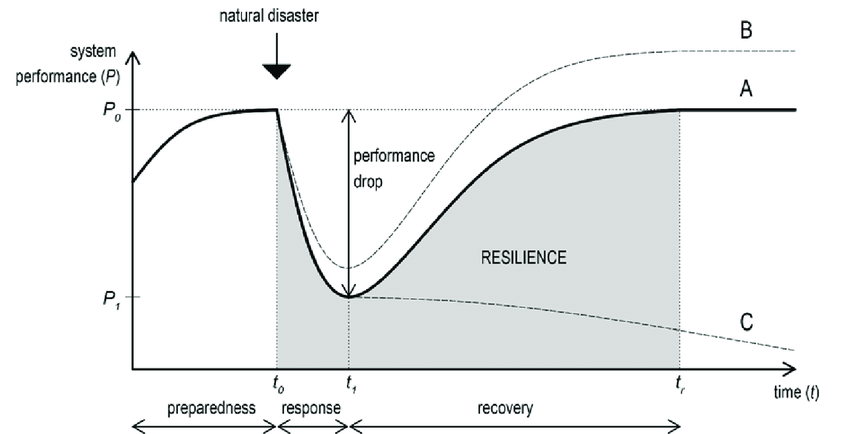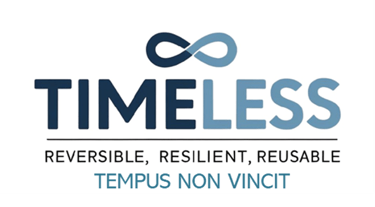Structural Resilience in Earthquake Design: How Dampers and TIMELESS Systems Enhance Safety
Explore how dampers improve structural resilience in earthquakes. Learn how TIMELESS combines safety, adaptability, and sustainability.
RESILIENCE
8/28/20253 min read


Modern buildings are still largely designed with a paradox: in order to protect lives during an earthquake, they are expected to sacrifice themselves. Structural codes around the world often accept significant damage as long as collapse is avoided. While this life-safety approach has saved many lives, it comes with enormous hidden costs. After a major seismic event, buildings may remain standing but unusable, requiring expensive repairs or even demolition.
This means direct losses from repair and reconstruction, but also indirect losses from downtime. Offices cannot reopen, schools remain closed, hospitals lose critical capacity, and families are displaced for months or even years. In a modern economy, downtime can cost more than the physical damage itself.
It is within this reality that the concept of structural resilience has gained attention. Resilience is not just about avoiding collapse, it is about ensuring that a structure continues to function, or can return to functionality quickly, after a disruptive event. A resilient building minimizes downtime, reduces economic and social costs, and provides a safer environment for communities.
The Role of Energy Dissipation
One of the main challenges in structural resilience is managing the enormous amount of energy that earthquakes release into buildings. Traditionally, this energy is absorbed by allowing parts of the structure to yield or deform, which inevitably leads to damage. But there is an alternative: dampers, or energy dissipation devices, which act as shock absorbers for buildings.
By dissipating seismic energy in controlled components, dampers protect the main structural elements from severe damage. Instead of over-dimensioning beams and columns to resist extreme forces, engineers can strategically place dampers that absorb vibrations and reduce the stress on the building as a whole.
How Dampers Work
Different types of dampers have been developed to meet different design needs:
Viscous dampers dissipate energy through the resistance of a fluid.
Friction dampers use sliding surfaces to absorb motion.
Metallic yielding dampers deform plastically in a controlled way, converting seismic energy into heat.
Regardless of their mechanism, their purpose is the same: reduce residual deformations, preserve structural integrity, and allow buildings to remain usable after an earthquake.
Why Resilience Matters
The transition from strength-based design to resilience-based design is crucial. It shifts the focus from “Will the building stand?” to “Will the building still function after the shock?”. For hospitals, schools, bridges, and essential infrastructure, this difference can decide the speed of recovery of an entire city.
By integrating dampers, structures can avoid irreparable damage and dramatically reduce downtime. This means fewer displaced families, faster reopening of businesses, and lower costs for society as a whole.
The Contribution of TIMELESS
The TIMELESS project pushes the concept of resilience even further. Instead of relying on dampers that degrade and need replacement after a major event, TIMELESS is developing reversible and self-healing damping systems.
Traditional friction dampers protect buildings during earthquakes, but they suffer from two major drawbacks:
The wear of friction materials and the loss of bolt pretension, which reduce their efficiency in subsequent events and impair the safety of the building in the aftermath.
Complex repair operations, often requiring the removal of architectural finishes and replacement of components—leading to downtime and costs.
TIMELESS tackles these limitations with innovations such as:
Advanced friction materials with high wear resistance, stable properties, and heat/corrosion resistance, ensuring they can dissipate energy repeatedly without losing effectiveness.
Resilient bolting systems (e.g. Belleville or disk springs) that maintain clamping force over time, preventing loss of preload and guaranteeing reliable damper performance.
Integration with Shape Memory Alloys (SMA-steel), which can “remember” and recover their original shape when heated. This allows structures to not only dissipate energy but also self-realign after earthquakes, reducing residual drifts that usually make buildings unsafe or unusable.
The possibility to temporarily loosen bolts, turning continuous frames into pinned ones. This adaptive feature makes repairs and realignment much easier, even after extreme events.
In short, TIMELESS aims to shift from the idea of “repairing damage” to avoiding damage, delivering structures that are multi-hazard resilient, reversible, and sustainable. TIMELESS buildings will be able to withstand repeated shocks, recover quickly, and remain functional, while also being designed for disassembly and reuse at the end of their life.
Looking Ahead
As urban risks increase, society can no longer afford buildings that protect people but lose functionality. TIMELESS resilient dampers offer a path toward structures that are not only safe but also functional after earthquakes. When dampers are combined with innovations like TIMELESS’s systems, they become part of a new paradigm where resilience and sustainability go hand in hand.
The future of constructions is about designing for continuity: buildings that can withstand shocks, recover quickly, and adapt to new needs—without becoming part of the waste problem. Dampers, and projects like TIMELESS, are showing the way.
